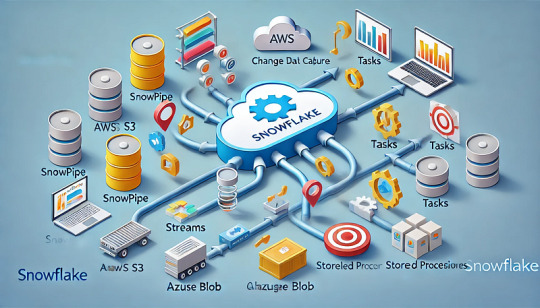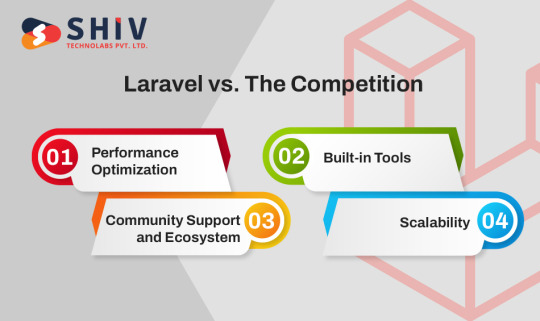#cron expression
Explore tagged Tumblr posts
Text
Nodejs Cron Job Scheduler & Cron Expression Tutorial in JavaScript with Examples for Developers
Full Video Link https://youtu.be/yI_xAky_-3c Hello friends, new #video on #cronjob #jobscheduler #scheduler #cronexpression in #nodejs #javascript #projeect #application #tutorial #examples is published on #codeonedigest #youtube channel.
In this video, we will learn to create CRON JOB SCHEDULER in nodejs javascript. We will learn what “node-cron” module in nodejs javascript. How to use “node-cron” package to schedule jobs in nodejs javascript. * Important Nodejs Javascript Packages or Modules * node-cron – The node-cron module is tiny task scheduler in pure JavaScript for node.js based on GNU crontab. This module allows you to…

View On WordPress
#cron expression#cron expression in javascript#cron job#Cron job example#Cron job scheduler#cron job scheduler expression#cron scheduler#javascript#javascript cron job#javascript full course#javascript job scheduler#javascript tutorial#javascript tutorial for beginners#job scheduler#job scheduling#learn nodejs#node js and express js tutorial#node js cron job#node js job scheduler#node js tutorial#node.js#nodejs#nodejs cron expression#nodejs tutorial
0 notes
Text

Counterpoint: I just spent 6 hours trying to figure out why my code wasn't running, and it turns out it's because I forgot to start my service class with @service
Also I did not think it was possible for something to be more wretched than RegEx but then I was introduced to cron expressions! What do you mean 0 0 8 * * * means "every day at 8 am??? I'm going to kill you.
Week 8 as a Java dev and i think SpringBoot notations should be outlawed
#valk replies#i do appreciate that there's a website called cronhub#to help you write cron expressions
3 notes
·
View notes
Text
having had a couple of days to think on things after finishing SM2's main campaign, im just gonna jot down my thoughts here. this isnt a critical review or any such, just my own musings and feelings that i had while playing the game, not some expression of universal experience
honestly, it was kinda mid. like, thats fine. its acceptable for a game to just be OK. a solid 6/10. thats above average. a passing grade. i kno what video game people are like (yes im looking at your people who think 7/10 is the lowest possible score a truly average game should get) there were just a couple of things that really brought it down for me. oh yeah this will contain spoilers, obvs
the chaos forces. didnt enjoy fighting them. nowhere near as fun as fighting the nids was. there was just something about fight the endless hordes of hunger, watching the hormagaunts pile up against the walls and climb over each other, thinning the herd as much as you can but knowing that you'll run out of grenades and bolts before they run out of bodies. or going toe to toe with hive knights and watching all the gaunts heads explode when you slay the synapse creature. great stuff! t-sons are just full of dust :(
the final boss fight... was a bit shit. okay that might be harsh, it was alright. until the end. every other boss fight until then i got to preform an exaction on the guy. it was very satisfying, watching titus rip bits off of a foe to finish them off. following behind calgar and then watching a cutscene where the titus grabs a Thing and then the sorceror goes :0 before turning to dust? lame. titus should have climbed on his warp-surfboard and ripped his arm off or something. especially satisfying since soceror got away the first time you fight him.
speaking of fighting, what the hell is up with the game just resetting your loadout to a auto bolt rifle, regular bolt pistol, and chainsword every so often? like by mid game ive already figured out what kit i have the most fun playing with, and the game has been out for like two and a half months, this should have been patched by now.
i want more pistols too. like i know the space marines also have the inferno pistol, flamer pistol, and neovolkite pistol. you could say that the neovolkite is incredibly rare and only bladeguards and some officers get them, which okay, fair enough. but the other two? tactical squad sergeants can get them like come on! and a powerfist. that would be sick
why. no. necrons. i got really excited when i saw the necron glyphs. i was like "titus is right, those look like the glyphs ive seen many times in Warhammer 40,000: Mechanicus". i thought we were do for a second mix up! because i was getting bored of fighting choas. but no it was just the blackstone pillars. yeah they're important to the overarching plot yadda yadda yadda but i wanna hack up some crons with a sword
finally, that final stand after picking up the standard. id seen it hyped up online. i was excited. i was going to stand there with my squad and hold out against possibly endless waves of tzangors until we nearly break, only to realise the enemy has stopped and we have won! or to even be overrun and forced to pull back! exciting! and then calgar just shows up and kills them all in a cutscene :(
4 notes
·
View notes
Text
















Took some gposes with Sam and Cron! They are awesome. Had to take a picture of lap lala! <3 Also play around with different expressions on Sam. :D Sam belongs to @generaljameson93
#varletartparty#final fantasy xiv#hyur midlander#lala#thancred#ffxiv art party#wol#ff14#ffxiv#aether
13 notes
·
View notes
Text
Master Python for Enterprise Automation with Red Hat’s AD141 Course
In today’s fast-paced IT environments, automation is the key to efficiency, scalability, and innovation. Whether you’re managing infrastructure, deploying applications, or streamlining workflows, having a powerful and versatile language in your toolkit makes all the difference. That’s where Python shines—and Red Hat takes it to the next level with its AD141: Python Programming with Red Hat course.
What is AD141?
AD141 - Python Programming with Red Hat is a hands-on training course designed to equip IT professionals with core Python programming skills—focusing specifically on enterprise-grade automation and Red Hat ecosystem integration.
This course is perfect for:
Linux administrators
DevOps engineers
Cloud and automation specialists
System engineers looking to build or enhance their Python skills in enterprise environments
🌟 Why Learn Python with Red Hat?
Python is not just a beginner-friendly language—it's a critical tool in enterprise automation, cloud orchestration, configuration management, and application development. Here’s why AD141 stands out:
✅ Enterprise Focused: Learn Python in the context of real-world system administration and Red Hat platforms.
✅ Hands-On Labs: Practical, lab-based learning aligned with real job roles and challenges.
✅ RHEL Integration: Practice scripting and automation on Red Hat Enterprise Linux (RHEL) systems.
✅ Expert Instruction: Developed by Red Hat’s curriculum team and taught by certified instructors.
📘 What You'll Learn
By the end of AD141, you’ll be able to:
Understand Python syntax and programming logic
Write and debug Python scripts for daily sysadmin tasks
Automate repetitive jobs and system configurations
Work with modules, files, regular expressions, and error handling
Integrate Python scripts into shell environments and cron jobs
🛠️ Real-World Applications
AD141 is more than just learning a language—it’s about solving enterprise problems efficiently:
Automating patch management and user provisioning
Writing Python-based monitoring scripts
Building CLI tools for DevOps teams
Integrating Python with Ansible, Podman, or REST APIs
🏁 Prerequisites
While no prior programming experience is required, it helps to have:
Basic understanding of Linux command-line tools
Familiarity with shell scripting and system administration
📅 How to Get Started?
At HawkStack Technologies, we offer Red Hat Certified Training with industry-grade infrastructure and personalized mentorship. Enroll in AD141 with us to get:
Access to the official Red Hat Learning Subscription (RHLS)
Hands-on lab environments
Exam preparation support
Career guidance and post-training support
👉 Ready to unlock the power of Python for enterprise automation? Contact HawkStack Technologies today and kickstart your Python journey with Red Hat’s trusted AD141 course.
0 notes
Text
A guide to setting up automated data workflows with Snowflake.

Introduction
In today’s data-driven world, organizations need to process vast amounts of data efficiently. Snowflake, a cloud-based data platform, offers powerful automation features that help streamline workflows, reduce manual effort, and enhance data processing efficiency.
Automating data workflows in Snowflake is essential for:
Real-time data ingestion from various sources.
Incremental data processing using change data capture (CDC).
Scheduled data transformations for ETL/ELT pipelines.
Trigger-based workflows that respond to new data events.
This guide will walk you through Snowflake’s automation features, step-by-step implementation, and best practices to ensure optimal workflow execution.
Understanding Snowflake Automation Features
Snowflake provides several built-in automation tools to simplify data workflows:
1. Snowpipe: Automated Data Ingestion
What it does: Snowpipe enables continuous and automated loading of data from cloud storage (AWS S3, Azure Blob, or Google Cloud Storage) into Snowflake tables.
Key Benefits:
Near real-time data ingestion.
Cost-efficient pay-per-use pricing model.
Automatic triggering using cloud storage event notifications.
2. Streams: Change Data Capture (CDC) in Snowflake
What it does: Streams track inserts, updates, and deletes in a table, enabling incremental data processing.
Key Benefits:
Efficient CDC mechanism for ETL workflows.
Ensures only modified data is processed, reducing compute costs.
Works seamlessly with Snowflake Tasks for automation.
3. Tasks: Automating SQL Workflows
What it does: Snowflake Tasks allow scheduling and chaining of SQL queries, enabling sequential execution.
Key Benefits:
Automates transformations and incremental data loads.
Supports event-driven workflows.
Can be scheduled using cron expressions.
4. Stored Procedures: Automating Complex Business Logic
What it does: Stored procedures allow procedural execution of SQL and Python-based logic within Snowflake.
Key Benefits:
Enables advanced data processing beyond standard SQL queries.
Supports loops, conditions, and API calls.
Works well with Tasks and Streams for automation.
Step-by-Step Guide to Setting Up Automated Workflows in Snowflake
1. Automating Data Ingestion with Snowpipe
Step 1: Create an External Stage
sqlCREATE OR REPLACE STAGE my_s3_stage URL = 's3://my-bucket/data/' STORAGE_INTEGRATION = my_s3_integration;
Step 2: Define a File Format
sqlCREATE OR REPLACE FILE FORMAT my_csv_format TYPE = 'CSV' FIELD_OPTIONALLY_ENCLOSED_BY = '"';
Step 3: Create a Table for the Incoming Data
sqlCREATE OR REPLACE TABLE raw_data ( id INT, name STRING, created_at TIMESTAMP );
Step 4: Create and Configure Snowpipe
sqlCREATE OR REPLACE PIPE my_snowpipe AUTO_INGEST = TRUE AS COPY INTO raw_data FROM @my_s3_stage FILE_FORMAT = (FORMAT_NAME = my_csv_format);
✅ Outcome: This Snowpipe will automatically load new files from S3 into the raw_data table whenever a new file arrives.
2. Scheduling Workflows Using Snowflake Tasks
Step 1: Create a Task for Data Transformation
sqlCREATE OR REPLACE TASK transform_data_task WAREHOUSE = my_warehouse SCHEDULE = 'USING CRON 0 * * * * UTC' AS INSERT INTO transformed_data SELECT id, name, created_at, CURRENT_TIMESTAMP AS processed_at FROM raw_data;
✅ Outcome: This task runs hourly, transforming raw data into a structured format.
3. Tracking Data Changes with Streams for Incremental ETL
Step 1: Create a Stream on the Source Table
sqlCREATE OR REPLACE STREAM raw_data_stream ON TABLE raw_data;
Step 2: Create a Task to Process Changes
sqlCREATE OR REPLACE TASK incremental_etl_task WAREHOUSE = my_warehouse AFTER transform_data_task AS INSERT INTO processed_data SELECT * FROM raw_data_stream WHERE METADATA$ACTION = 'INSERT';
✅ Outcome:
The Stream captures new rows in raw_data.
The Task processes only the changes, reducing workload and costs.
4. Using Stored Procedures for Automation
Step 1: Create a Python-Based Stored Procedure
sqlCREATE OR REPLACE PROCEDURE cleanup_old_data() RETURNS STRING LANGUAGE PYTHON RUNTIME_VERSION = '3.8' HANDLER = 'cleanup' AS $$ def cleanup(session): session.sql("DELETE FROM processed_data WHERE processed_at < CURRENT_DATE - INTERVAL '30' DAY").collect() return "Cleanup Completed" $$;
Step 2: Automate the Procedure Execution Using a Task
sqlCREATE OR REPLACE TASK cleanup_task WAREHOUSE = my_warehouse SCHEDULE = 'USING CRON 0 0 * * * UTC' AS CALL cleanup_old_data();
✅ Outcome: The procedure automatically deletes old records every day.
Best Practices for Snowflake Automation
1. Optimize Task Scheduling
Avoid overlapping schedules to prevent unnecessary workload spikes.
Use AFTER dependencies instead of cron when chaining tasks.
2. Monitor and Troubleshoot Workflows
Use SHOW TASKS and SHOW PIPES to track execution status.
Check TASK_HISTORY and PIPE_USAGE_HISTORY for errors.
sqlSELECT * FROM SNOWFLAKE.INFORMATION_SCHEMA.TASK_HISTORY WHERE STATE != 'SUCCEEDED' ORDER BY COMPLETED_TIME DESC;
3. Cost Management
Choose the right warehouse size for executing tasks.
Pause tasks when not needed to save credits.
Monitor compute costs using WAREHOUSE_METERING_HISTORY.
4. Security Considerations
Grant least privilege access for tasks and Snowpipe.
Use service accounts instead of personal credentials for automation.
Encrypt sensitive data before ingestion.
Conclusion
Snowflake provides powerful automation tools to streamline data workflows, enabling efficient ETL, real-time ingestion, and scheduled transformations. By leveraging Tasks, Streams, Snowpipe, and Stored Procedures, you can build a fully automated data pipeline that is cost-effective, scalable, and easy to manage.
✅ Next Steps:
Experiment with multi-step task workflows.
Integrate Snowflake automation with Apache Airflow.
Explore event-driven pipelines using cloud functions.
WEBSITE: https://www.ficusoft.in/snowflake-training-in-chennai/
0 notes
Video
youtube
Salesforce CRON Expression Demystified | Boost Your Efficiency Now
1 note
·
View note
Video
youtube
Salesforce CRON Expression Demystified | Boost Your Efficiency Now
0 notes
Text

Dynamic job scheduling in C# can be effectively implemented using the Quartz library. Quartz offers a robust and flexible solution for creating, managing, and scheduling jobs within applications, catering to a variety of scheduling needs. With Quartz, developers can define jobs to run at specific times or intervals, using simple or complex scheduling rules, including cron-like expressions. This functionality is ideal for automating tasks such as reporting, data processing, email notifications, and system maintenance.
One of the key advantages of using Quartz is its ability to handle dynamic job scheduling, allowing jobs to be added, modified, and removed on the fly without needing to restart the application. This provides significant flexibility in managing scheduled tasks. Quartz supports various storage options for job configurations, including in-memory, and NoSQL databases, ensuring persistent and reliable storage of scheduling data.
The API provided by Quartz is intuitive and easy to use, facilitating quick integration into C# applications. Features such as job chaining, misfire handling, and the ability to schedule jobs based on calendars and triggers enhance its comprehensive scheduling capabilities. Moreover, Quartz supports clustering for high availability and scalability, making it suitable for both small applications and large-scale enterprise systems.
In summary, using Quartz dynamic job scheduling in C# offers a reliable and versatile solution for automating and managing tasks within applications, providing developers with the tools needed to build efficient and scalable scheduling systems.
0 notes
Text
Laravel vs. The Competition: What Sets it Apart in Web Development

Laravel has gained popularity as one of the most favourable PHP frameworks, admired by developers for its elegance, ease of use, and powerful features. Developed by Taylor Otwell, it is a free and open-source PHP web application framework that adopts the Model-View-Controller (MVC) architectural pattern.
As per the recent data, there are approximately 757,533 live websites which are using Laravel. This blog discusses what differentiates Laravel from other frameworks and why it has become the preferred choice for many companies and developers.
Laravel: A Brief Overview

Laravel is built on several Symfony components which serve as a well-tested, stable base of code. This base enables Laravel to offer advanced features while preserving high performance. The framework aims to ease the development process by handling common tasks typically involved in web projects, such as authentication, routing, sessions and caching.
As more businesses recognize the value of Laravel, the demand for Laravel development services has grown exponentially. These services can greatly improve your web development projects by using the framework capabilities, best practices, and industry experience.
Key Features that Set Laravel Apart
Eloquent ORM (Object-Relational Mapping)
Eloquent ORM is the built-in ORM of Laravel and is considered one of the most advanced ORM implementations in PHP. It enables developers to work with database objects and their relationships using simple, easy-to-understand language. This simplifies the code as well as eliminates the requirement for manual SQL queries, with the guarantee that data access is secure and efficient.
Artisan Console
Artisan is a command-line interface of Laravel built into the framework itself. It offers a wide range of useful commands for building a Laravel app.
Artisan provides the ability to automate those tedious, repetitive tasks which are normally manual and non-productive. It is also able to generate template code for new controllers, models and migrations, which can then be modified to fit specific needs, hence accelerating the entire process of development.
Template Engine (Blade)
Laravel’s Blade templating engine is incredibly flexible and powerful, yet it allows developers to use plain PHP code in the templates. Unlike many PHP templating engines, Blade does not restrict you from using code in views, making it possible to implement complex data operations right within the template, while still keeping the syntax clean and readable.
Security
Laravel provides a robust security framework that is fundamental to the development of web applications. It has built-in protections against common threats such as SQL injection, cross-site scripting (XSS), and cross-site request forgery (CSRF). Laravel uses hashed passwords, meaning the actual password is never stored in the database, just a secure hash of it.
Libraries & Modular
Laravel comes with pre-built libraries and modules that make it easier to enhance an application's capabilities without building features from scratch. One of the standout libraries is the Authentication library, which is easy to implement and can be customized to meet specific needs, providing a ready-to-use way to integrate secure authentication methods into applications.
Automated Task Scheduling
Laravel's command scheduler allows the programmatic scheduling of periodically executed tasks. Traditionally, developers have had to generate a Cron entry for each task they need to be scheduled. Laravel simplifies this with a fluent, expressive interface to define command schedules within Laravel itself, making it easier to manage tasks directly through the framework.
Laravel vs. The Competition

Performance Optimization
Laravel often outperforms its competitors due to built-in caching mechanisms and optimization tools, such as route caching, configuration caching, and view compilation. Unlike some frameworks like Zend, which may require manual optimization techniques, Laravel provides straightforward commands to boost performance, making it inherently faster and more efficient for complex applications.
Built-in Tools
Laravel comes with several pre-packaged tools such as Eloquent ORM, migration system, and seeding that are not as robust or even available in some other PHP frameworks like CodeIgniter. This suite of tools can significantly reduce development time and increase productivity by eliminating the need to write boilerplate code.
Community Support and Ecosystem
Laravel boasts a large, active community and a rich ecosystem, which includes comprehensive forums, extensive tutorials, video resources, and third-party packages. This is a contrast to smaller communities like that of Phalcon, where fewer resources and community support can limit problem-solving and learning opportunities.
Scalability
Laravel's ability to scale is comparable to that of any leading framework. It manages resources efficiently and can handle large-scale applications with ease. This stands in contrast to some PHP frameworks that might struggle under the weight of enterprise-level user loads or complex back-end operations.
Conclusion
Laravel continues to lead in the PHP framework domain due to its ease of use, comprehensive feature set, and robust community support. Whether it's the intuitive syntax or security features, Laravel provides a foundation that facilitates both simple and complex web application development.
Leveraging the expertise of a reliable Laravel development company like Shiv Technolabs, you can maximize the potential of Laravel to achieve your web development goals effectively and efficiently.
0 notes
Text
Mastering CRON Expressions for Cloud Workflow Automation
Cloud Workflow offers a scheduler for automating tasks over time, with the option to define schedules using either a menu or a CRON expression. This article explores CRON expressions, a time-based utility commonly found in Unix-like systems, used to schedule task execution. We'll delve into the syntax and advantages of CRON expressions, along with a guide on how to incorporate them into Cloud Workflow.
1 note
·
View note
Text
Most of my colleagues find cron expressions understandably hard to read.
Which makes me feel very sorry about the deeply unhinged expressions i wrote to satisfy the autism fairy, which they are about to have to review
6 notes
·
View notes
Text
Noida's Shree Krishna Graphics acquires Cron CtP

Noida-based Shree Krishna Graphics, a pre-press bureau and a supplier of offset plates, recently acquired a CRON UVP-4664G+I+ commercial & newspaper CtCP system from Monotech Systems. It already had a thermal CtP system from Technova from the date of its establishment in August 2022.
Anupam Gupta, director of Shree Krishna Graphics, also runs two other companies — Krishna Sales, which deals in plates and consumables from prominent brands such as Technova, DIC, and Toya as well as Crystal Graphics, an offset plate provider in Ghaziabad.
“The surge in demand for plates was a catalyst for us to start Crystal Graphics with the Amsky thermal CtP system. Later on, it became difficult to fulfill the demand for plates from printers in Noida. This need was the catalyst for Shree Krishna Graphics.” Just like Shree Krishna Graphics, Crystal Graphics is also equipped with two systems for plate production.
Gupta said the installation of the CRON CtP was the result of positive feedback that was doing the rounds about the machine in the market from its customers. He praised the ease of maintenance, accuracy, and speed of the press as well as the technical support of Monotech Systems. The CRON UVP-4664G can produce 28 plates per hour (28*40 inch), supporting plate sizes up to 1160mm. Dot imaging, accurate dot reproduction with a minimum error rate, and a 64-channel capacity are some of its key features.
Loksatya, Jagat Kranti, and Hindustan Times along with several other newspapers, publishers, and packaging and commercial printers form the clientele base of Shree Krishna Graphics.
Expressing his thoughts on digital printing, he said its growth is not along expected lines in India right now. “drupa 2016 predicted digital printing to be a game-changer in the industry. It has been eight years but the expected rate of growth hasn't seen its peak.” Though he acknowledges that the value of additional printing is something that only can be done digitally, he says the quality of output and cost-effectiveness of printing in offset are unmatchable. “Every offset printer has a digital printing system but is not ready to give up offset completely.”
Gupta recalls his transition to entrepreneurship, leaving behind salaried jobs across different sectors. “A printing technologist by profession, I served as a production head at The Indian Express, later joining the Ministry of social justice as a gazetted officer. However, my industry-centric mindset led me to The Times of India (Sahibabad) and eventually as the north India head of CMS Info Systems (Mumbai). This journey paralleled the establishment of Krishna Sales in 2010 until 2013 when I devoted myself entirely to business.”
0 notes
Text
The Digital Tightrope Walk for Business and Human Rights
By Pooja Dela-Cron, Partner & Paula-Ann Novotny, Senior Associate from Webber Wentzel AI offers unprecedented opportunities for growth and innovation but also presents significant challenges and risks, especially concerning human rights and corporate governance. Imagine a future where your access to justice depends on an algorithm, your freedom of expression is filtered through AI, and your…
View On WordPress
0 notes
Text
Efficiency Unleashed: Mastering Task Automation with Laravel Schedule
This dynamic tool simplifies cron job management, introduces an expressive syntax for task scheduling, and ensures the seamless execution of recurring tasks. Let's explore how Laravel Schedule empowers developers, streamlining operations and enhancing overall efficiency.
Introducing Laravel Schedule:
Laravel Schedule is a robust task scheduling system seamlessly integrated into the Laravel framework. Its purpose is to simplify the process of automating routine tasks, providing developers with a versatile solution for managing scheduled activities within their applications.
Expressive Task Scheduling Syntax:
A standout feature of Laravel Schedule is its expressive and human-readable syntax for task scheduling. Developers can effortlessly define when and how often a task should run, whether it's a daily maintenance routine, hourly updates, or any other recurring activity, making it easy to articulate complex execution patterns.
Artisan Console Integration:
Laravel Schedule seamlessly integrates with the Artisan console, Laravel's powerful command-line tool. This integration allows developers to manage scheduled tasks, monitor their execution, and make adjustments to the schedule—all within a familiar and convenient environment.
Simplified Cron Job Management:
One of the key advantages of Laravel Schedule is its simplified approach to cron job management. Developers can automate the execution of scheduled tasks without the need for intricate manual configurations of cron jobs on the server. This streamlines the entire process and reduces potential errors.
Recurring Task Automation:
Laravel Schedule excels at handling recurring task automation, allowing developers to automate processes such as database cleanups, email notifications, or any other routine tasks crucial for application maintenance. This ensures consistent and reliable execution of essential operations.
Task Priority and Dependencies:
Developers can define task priorities and dependencies within Laravel Schedule, enabling a structured and organized approach to task execution. This ensures that tasks are processed in the correct order, preventing conflicts and ensuring the seamless flow of operations.
Enhanced Application Maintenance:
By incorporating Laravel Schedule into their development workflow, developers can enhance application maintenance. Automated execution of routine tasks reduces manual intervention, minimizing the risk of errors and ensuring that critical maintenance activities are performed consistently.
Dynamic Task Rescheduling:
Laravel Schedule offers dynamic task rescheduling, allowing developers to adapt to changing requirements and operational needs. This flexibility ensures that tasks can be adjusted and rescheduled easily, accommodating evolving project demands.
Improved Code Readability:
The expressive syntax of Laravel Schedule contributes to improved code readability. Tasks are defined in a clear and concise manner, making it easier for developers to understand, maintain, and collaborate on the codebase.
Boosting Developer Productivity:
Ultimately, Laravel Schedule contributes to a significant boost in developer productivity. By automating routine tasks, developers can focus on more complex and creative aspects of application development, leading to faster project delivery and enhanced overall efficiency.
0 notes
Video
youtube
Nodejs Cron Job Scheduler & Cron Expression Tutorial in JavaScript with ...
0 notes